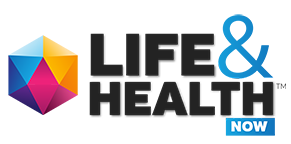
What is Health Insurance?
The purpose of health insurance is to cover the majority of costs related to medical care and treatment of illnesses and injuries; this includes surgical, medical, prescription medication, and some dental expenditure.
If you are unable to work because of an illness or injury, health insurance may reimburse you and/or directly pay your healthcare provider.
Most individuals acquire health insurance through their employer, but you can also receive health insurance privately or through a State exchange. You are likely to encounter different terms that describe your financial responsibility for coverage and payments; these are:

Premium:
The monthly payment amount which you pay for health insurance is called a premium. It’s normal to have extra insurance related costs in addition to your monthly premium, such as your deductible, copayments, and coinsurance.
Because of these additional costs, it’s a good idea to keep in mind when you’re shopping around for your health insurance that the policy with the lowest monthly premium may not end up being the least expensive for you or your family, before the year is over. If you’re anticipating frequent medical visits, it may be to your advantage to pay a slightly higher monthly premium with a lower deductible, than to pay a lower monthly payment with higher deductible.
Deductible:
This is the amount you pay for covered health care services before your insurance plan starts to pay. With a $5,000 deductible, for example, you would pay the first $5,000 of covered services for the year, out of your own pocket. After you pay an amount equal to your deductible amount (deductible amounts do vary depending on your policy), you will then usually pay for a portion of the covered services, this is called a copayment or coinsurance for your covered services.
Copay:
A set amount (for example, $25) that you pay for a covered health care service after you’ve paid your deductible. Let’s say your allowable cost for a doctor’s office visit is $100. Your copayment for a doctor visit is $25.
Coinsurance:
The percentage of costs of a covered health care service that you pay out of pocket. Let’s use an example of 30% and a $2,000 annual deductible. Let’s assume that you’ve paid $2,000 out of pocket towards your health insurance cost for the year. Let’s also assume that your health insurance plan’s allowed amount for an office visit cost is $100 and your coinsurance percentage is 30%. Since you’ve paid your $2,000 deductible: You pay 30% of $100, or $30. In this scenario, if you have not paid your deductible for the year, let’s say you’ve only paid $1200 towards your yearly covered medical expenses, then you would pay the full $100 and that would increase your deductible expense from $1200 out of pocket to $1300 for the year.
Editorial Disclosure: The information published within this article is based on the author’s view. The opinions and recommendations expressed here have not been reviewed, submitted for review, or acknowledged by any of our network providers or partners.
